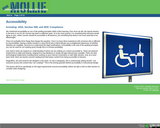
Accessibility in Online Learning
- Subject:
- Education
- Material Type:
- Activity/Lab
- Reading
- Provider:
- AEA
- Provider Set:
- OLLIE
- Author:
- Evan Abbey
- Date Added:
- 12/03/2018

Accessibility in Online Learning
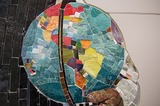
This unit explores the various ways information and ideas about climate change are presented through a variety of media. This includes the evaluation of social media posts, research into climate change issues, and an exploration of contemporary art and artists. This was designed and taught in an honors 9th grade English Language Arts Classroom by Dr. Tavia Quaid in response to student interest in climate change and to reinforce key information literacy skills.
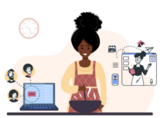
The activities in this cookbook draw on research and good practice in online course design to provide recipes - concise and specific instructions and examples - for adding asynchronous activities to a course. Meaningful interaction between students and instructors is a key ingredient in all of these recipes.
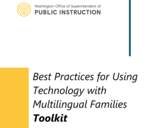
This toolkit is designed to help Local Educational Agencies (LEAs) create and maintain effective strategies with multilingual families. We explore and model best practices for the use of technology in teaching, as well as for assessing and communicating with diverse adults. The following guide is applicable for face-to-face, blended, and online instruction, and can also serve as a toolkit.
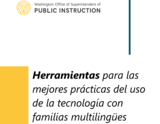
Este conjunto de herramientas está diseñado para ayudar a las Agencias Educativas
Locales (LEA, por sus siglas en inglés) a crear y mantener estrategias efectivas con las
familias multilingües. Exploramos y modelamos las mejores prácticas para el uso de la
tecnología en la enseñanza, así como para evaluar y comunicarnos con adultos diversos.
La siguiente guía es aplicable para la instrucción presencial, combinada y en línea, y
también puede servir como un conjunto de herramientas para tal efecto.
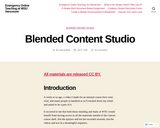
A practical guide to creating blended learning, with lots of videos to illustrate steps and concepts. Written for higher ed, but definitely usable for anyone.

The Center for Strengthening the Teaching Profession – Teacher Tech Project provides information, resources and learning opportunities for teachers to develop their knowledge, skills and understanding of Learning Management Systems and instructional design for distance learning.
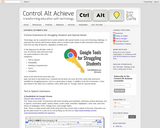
Technology can be a powerful tool to assist students with special needs or any sort of learning challenge. In particular the Chrome web browser allows users to install a wide variety of web extensions that provide tools that can help all learners, regardless of ability level.
In this blog post we will take a look at over 30 Chrome web extensions that can assist students in five main categories:
Text to Speech
Readability
Reading Comprehension
Focus
Navigation
Some of the tools fit into more than one topic, but each is only listed once. Certainly this list does not cover all of the useful web extensions available for struggling learners, but it is a great place to begin. In addition to the list of extension, I have also linked in the video from a webinar I did a while back on "Google Tools for Special Needs".

With students and educators under shelter-at-home orders, states and districts are faced with difficult decisions about how to support students’ science learning while they are home. Home environments support different aspects of student learning than school-based environments. Designing home-based learning experiences to intentionally take advantage of the unique assets of being at home can be supportive of students’ social, emotional, and mental health; provide a meaningful and complementary science learning experience; and allow students to explore real-world and personally relevant science in ways that are difficult to accomplish in school. Field-based examples of home and neighborhood investigations of ecological systems will be shared.
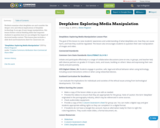
Students examine what deepfakes are and consider the deeper civic and ethical implications of deepfake technology. In an age of easy image manipulation, this lesson fosters critical thinking skills that empower students to question how we can mitigate the impact of doctored media content. This lesson plan includes a slide deck and brainstorm sheet for classroom use.

This sequenced collection, curated by Seattle Public School educators, contains openly-licensed Digital Citizenship resources for K-5 educators.
The information revolution of the 21st century is as significant and transformative as the industrial revolution of the 19th century. In this unit, students – and by proxy their families – will learn about the challenges of our current information landscape and how to navigate them. This unit is split into four modules. These modules can be done sequentially or stand on their own, depending on students’ needs and teachers’ timeframes. In this module (1 of 4), students analyze their own use of online social media platforms and learn how filter bubbles and confirmation bias shape the content of their media environment.
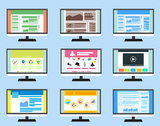

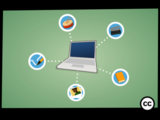

Explore this area to learn about appropriate distance learning supports.
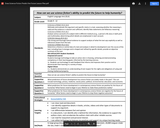
Students will learn the potential costs and benefits of social media, digital consumption, and our relationship with technology as a society in the three-week lesson. This inquiry based unit of study will answer the following questions:
Essential Question: How can we use science fiction’s ability to predict the future to help humanity?
Supportive Questions 1: What predictions of future development has science fiction accurately made in the past? This can include technology, privacy, medicine, social justice, political, environmental, education, and economic.
Supportive Question 2: What predictions for future development in contemporary science fiction are positive for the future of humanity? What factors need to begin in your lifetime to make these predictions reality?
Supportive Question 3: What predictions for future development in contemporary science fiction are negative for the future of humanity? What factors need to begin in your lifetime to stop these negative outcomes?

Description: Don’t be fooled by food messaging is a media literacy embedded health unit that takes the health goals of maintaining a healthy lifestyle and adds some critical thinking skills and communication skills. In food marketing young people are surrounded by persuasive claims meant to influence and manipulate their eating behavior. Students will explore some of the techniques and strategies food marketers use to influence their eating behavior to better understand how it impacts their own food choices. Within the PE program students will discuss how food choices, levels of consumption and physical activity levels influence health and wellness. Body image/healthy weight will be incorporated into this content. The culminating projects require students to work collaboratively to synthesize their new learning while using a variety of strategies to create their own healthy choices messaging production projects.

This guide is meant to help teachers utilize technology in the classroom while protecting their students’ privacy.
Technology tools and apps are making it possible for educators and students to collaborate, create, and share ideas more easily than ever. When schools use technology, students’ data—including some personal information—is collected both by educators and often the companies that provide apps and online services. Educators use some of this data to inform their instructional practice and get to know their students better. It is just as essential for educators to protect their students as it is to help them learn.

What does formative assessment look like during distance learning? Without proximity, how can teachers gather and act on “in-the-moment” information – the behaviors, emotions, and situations that affect learning and inform instruction?
This resource provides explanations, sample questions, and possible actions to implement formative assessment during distance learning scenarios.
Image by Peggy und Marco Lachmann-Anke from Pixabay